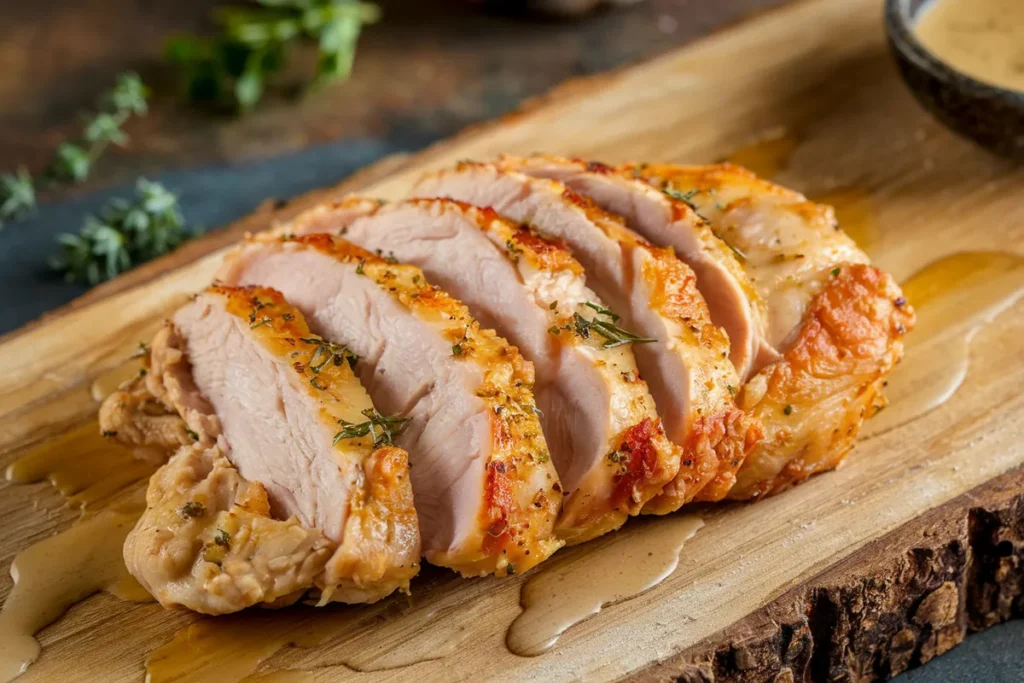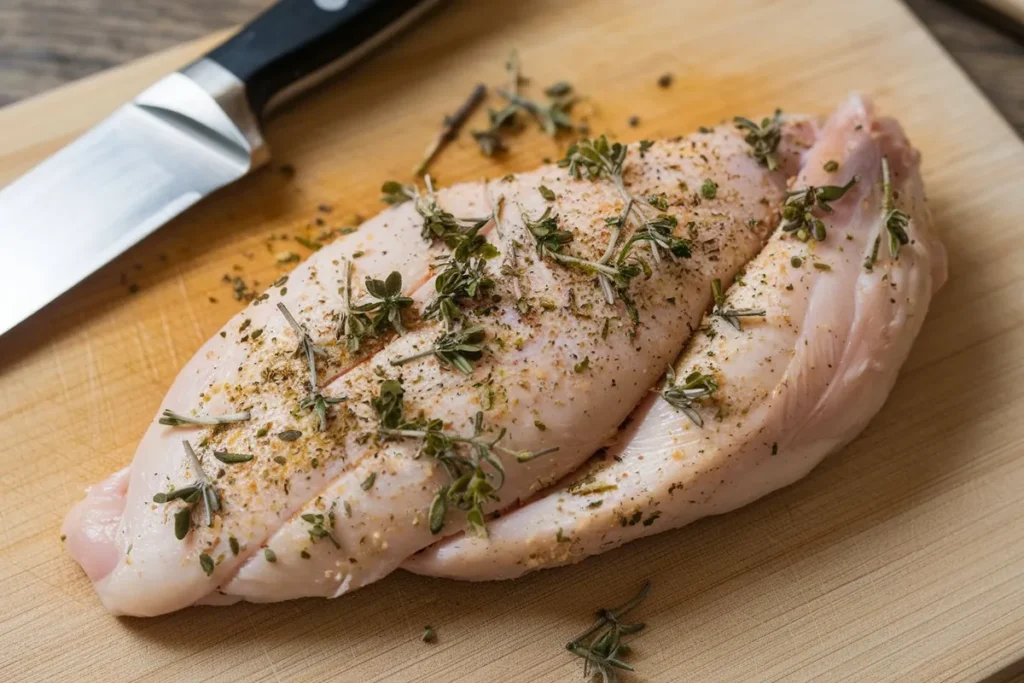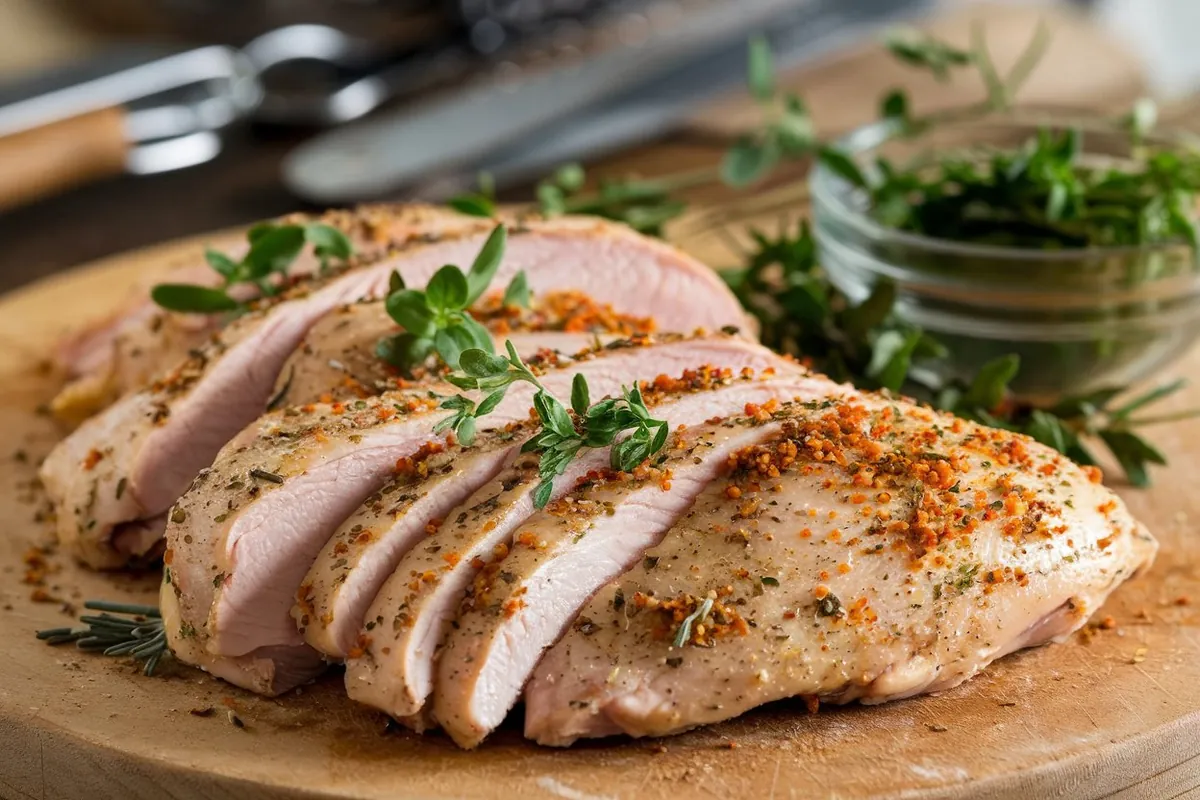Thin cut chicken breast is one of the most versatile and popular protein sources used worldwide. From simple weeknight dinners to elaborate culinary creations, thin chicken slices fit into various recipes with ease. Among the different cuts of chicken, this specific type has gained popularity for its convenience and quick cooking time. In this article, we explore what these thin cuts are called, how to prepare them, their nutritional benefits, and much more.
Understanding Thinly Sliced Chicken Options
Thin cut chicken breast refers to chicken breasts that are sliced thinner than the typical whole breast, usually less than half an inch thick. Chefs achieve this thinness by butterflying the breast (slicing it horizontally) or by pounding it with a meat mallet to reach an even thickness. These thin slices reduce cooking time significantly, making them ideal for quick and easy meals.
The culinary world often refers to thin cut chicken breasts as chicken cutlets. This term is widely recognized and used in many recipes. Other names you might encounter include chicken fillets and chicken scallopini. The naming conventions can vary depending on the region and the specific dish.
Understanding these terms helps you navigate recipes and menu items more effectively. For example, chicken cutlets are simply boneless, skinless pieces of chicken breast that have been thinly sliced for faster cooking. This cut’s versatility makes it popular in various cuisines, from Italian to American and beyond.
Best Preparation Techniques for Thinner Chicken Cuts
Preparing thin cut chicken breast is straightforward, but it requires a few specific techniques to ensure the best results. Here’s a step-by-step guide to preparing chicken cutlets at home:
- Butterflying the Chicken Breast: Start with a boneless, skinless chicken breast. Place it on a cutting board, and using a sharp knife, slice the breast horizontally, stopping just before cutting it completely through. Open it up like a book. This technique, known as butterflying, effectively doubles the surface area and reduces the thickness of the meat.
- Pounding the Chicken Breast: After butterflying, place the chicken between two sheets of plastic wrap or in a resealable plastic bag. Use a meat mallet, rolling pin, or the bottom of a heavy skillet to gently pound the chicken until it reaches a uniform thickness, typically about 1/4 inch. This step not only ensures even cooking but also tenderizes the meat.
These preparation methods are quick and result in tender, evenly cooked chicken that absorbs marinades and flavors more effectively. If you prefer ready-to-use options, many supermarkets offer pre-cut thin sliced chicken breasts, saving you time in the kitchen.
Different Names for This Popular Chicken Cut
Knowing the various names for thin cut chicken breast can enhance your culinary knowledge and help you choose the right cut for your recipes. Here are the most common terms:
- Chicken Cutlets: The most widely used term, “cutlets” refers to the thin, boneless pieces of chicken breast that are ideal for quick-cooking recipes.
- Chicken Fillets: This term emphasizes the thinness of the cut. Fillets are often associated with fish, but in the context of chicken, it indicates a similar thin, boneless cut.
- Chicken Scallopini: Frequently used in Italian cuisine, “scallopini” refers to a thin, boneless cut that is often dredged in flour and sautéed. This term is particularly popular in dishes that involve a sauce, such as chicken piccata or marsala.
- Paillards: A French term that describes thin, pounded slices of meat, including chicken. Paillards are often grilled or pan-seared.
These names are interchangeable to some extent, but they all represent the concept of a thinly sliced or pounded chicken breast. Recognizing these terms can help you identify the right cut for your recipes and expand your cooking repertoire.
Nutritional Value of Thin Cut Chicken Breast

Thin cut chicken breasts are not just convenient and versatile; they are also a healthy choice for many diets. Here’s a breakdown of the nutritional benefits:
- High Protein Content: Chicken breast is renowned for its high protein content, which is essential for muscle growth and repair. A serving of thin cut chicken breast provides a significant amount of protein with fewer calories than many other protein sources.
- Low Fat: When skinless, thin cut chicken breasts are low in fat, making them ideal for those looking to reduce fat intake while still enjoying a hearty meal.
- Rich in Vitamins and Minerals: Chicken breast is an excellent source of B vitamins, including niacin (B3) and vitamin B6, which are vital for energy production and brain health. It also provides important minerals such as phosphorus and selenium, which support bone health and the immune system.
These nutritional attributes make thin cut chicken breast a staple in many health-conscious diets. Whether you’re looking to build muscle, lose weight, or maintain a balanced diet, this cut of chicken offers a nutritious and delicious option.
Popular Dishes Using Thin Cut Chicken Breast
One of the reasons thin cut chicken breast is so popular is its versatility. It can be used in a wide variety of dishes, each with its unique flavor profile. Here are some of the most popular recipes that feature this cut:
- Chicken Piccata: A classic Italian dish that features chicken cutlets sautéed with lemon juice, white wine, and capers. The result is a light, tangy dish perfect for serving over pasta or alongside vegetables.
- Chicken Parmesan: Breaded and fried chicken cutlets are topped with marinara sauce and mozzarella cheese, then baked until the cheese is melted and bubbly. This dish is a favorite in Italian-American cuisine. For a twist, explore the difference between chicken parmesan and parmigiana.
- Grilled Chicken Cutlets: Simply marinated with olive oil, garlic, and herbs, then grilled to perfection. Grilled chicken cutlets are perfect for adding to salads, sandwiches, or wraps.
- Chicken Marsala: Sautéed with mushrooms and Marsala wine, this dish has a rich, savory flavor. The thinness of the cutlets allows them to cook quickly and absorb the flavors of the sauce.
These dishes showcase the versatility of thin cut chicken breast, making it a go-to option for both weeknight dinners and special occasions. Its ability to take on different flavors and cooking styles makes it a favorite among home cooks and professional chefs alike.
Cooking Methods for Thin Cut Chicken Breast
There are several ways to cook thin cut chicken breast, each bringing out different flavors and textures. Choosing the right cooking method depends on the dish you are preparing and your personal preferences:
- Pan-Frying: This method is quick and results in a crispy exterior. Heat a small amount of oil in a skillet over medium-high heat, add the chicken cutlets, and cook for about 2-3 minutes on each side until golden brown.
- Baking: Baking is a healthier method that requires little to no added fat. Preheat the oven to 400°F, place the cutlets on a baking sheet, and bake for 10-15 minutes, or until the chicken reaches an internal temperature of 165°F.
- Grilling: Grilling adds a smoky flavor and attractive grill marks. Preheat the grill to medium-high, lightly oil the grates, and grill the cutlets for 2-3 minutes on each side.
- Sous-Vide: This precise cooking method involves vacuum-sealing the chicken and cooking it in a water bath at a controlled temperature. Sous-vide ensures that the chicken is cooked perfectly without becoming dry.
Each of these methods offers a different way to enjoy thin cut chicken breast, allowing you to tailor the taste and texture to suit your dish. By experimenting with different cooking methods, you can discover new flavors and enhance your culinary skills.
Tips for Cooking Thin Cut Chicken Breast Perfectly
To achieve the best results with thin cut chicken breast, follow these tips:
- Avoid Overcooking: Because thin cut chicken breasts cook quickly, it’s important to monitor them closely to prevent overcooking, which can lead to dryness.
- Marinate for Flavor: A simple marinade can add a lot of flavor and help keep the chicken moist. Use ingredients like olive oil, lemon juice, garlic, and herbs for a flavorful marinade. For an extra boost of flavor, consider using a brine. Check out this simple brine formula to ensure your chicken remains juicy and flavorful.
- Season Properly: Don’t be afraid to season your chicken well. Salt and pepper are essential, but adding herbs, spices, or even a pinch of cayenne can elevate the flavor.
- Use the Right Temperature: Ensure that the internal temperature of the chicken reaches 165°F for safe consumption. Using a meat thermometer can help you avoid undercooking or overcooking the chicken.
By following these tips, you can make sure your thin cut chicken breast is perfectly cooked, flavorful, and juicy every time. your thin cut chicken breast turns out tender, juicy, and full of flavor every time you cook.
Where to Buy Thin Cut Chicken Breast

Finding thin cut chicken breast is easier than you might think. Here are some common places to look:
- Supermarkets: Many grocery stores offer pre-packaged thin sliced chicken breasts in the poultry section. Look for labels that say “thin sliced,” “cutlets,” or “fillets.”
- Butchers: Your local butcher can custom cut chicken breasts to your preferred thickness. Simply ask for thin-sliced chicken or provide specific instructions on how you would like it prepared.
- Online Sources: Many poultry producers and specialty stores offer thin cut chicken breast for delivery. Ordering online can provide more options, including organic or free-range chicken.
By knowing where to buy thin cut chicken breast, you can easily incorporate this versatile cut into your cooking routine.
FAQs About Thin Cut Chicken Breast
- What is the difference between a chicken cutlet and a fillet?
- Both terms refer to thinly sliced pieces of chicken breast. However, “cutlet” is more commonly used to describe a specific preparation style where the chicken is breaded and fried. Explore more in-depth differences with our article on the difference between chicken cutlets and thin sliced chicken breast.
- How do you make chicken breast thinner?
- Use the butterflying technique to halve the breast horizontally, then use a meat mallet to pound it to the desired thickness. This method is quick and ensures even cooking.
- Is thin cut chicken breast healthier?
- Yes, it offers the same nutritional benefits as regular chicken breast but with a leaner profile when skinless. Its high protein and low-fat content make it ideal for weight loss and muscle-building diets.
- Can thin cut chicken breast be frozen?
- Absolutely, thin cut chicken breast can be frozen and used later without compromising texture or flavor. For best results, wrap each piece in plastic wrap before placing it in a freezer-safe bag. This prevents freezer burn and keeps the chicken fresh.
- How do you keep thin chicken breast moist?
- Using a brine before cooking can help retain moisture in the chicken. Learn more about how to keep thin chicken breast moist for succulent results every time.
Conclusion
Thinly sliced chicken breast is a versatile and convenient option for many dishes. Whether referred to as cutlets, fillets, or scallopini, this type of chicken makes it easy to prepare quick, healthy, and delicious meals. By understanding the various names, preparation methods, and cooking techniques, you can confidently add these thin slices to your culinary repertoire.
By following these guidelines and tips, you can enjoy the benefits of this adaptable and nutritious ingredient in a variety of tasty ways. Whether you’re cooking for yourself, your family, or guests, thin chicken slices provide a healthy and satisfying option that fits into any meal plan..
